Related Entries
even before you think of all those trappingsYou can put as many whimsy add-ons as you want and as can be amalgamated into a computer, but you have to have the basic parts and components in place and operating accurately, even before you think of all those trappings. A single piece lacking from these essential components may render the computer inoperable.

In a nutshell, a computer system has these elemental components to keep it going: the motherboard, the central processing unit (CPU), the memory, the hard disk drive, the power supply unit (PSU), the video card and the attached peripherals: the mouse, the keyboard, and the monitor. Now let's check the role each part plays to make the system function as it should.
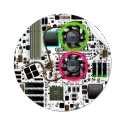 Motherboard Also sometimes called the 'mobo', the motherboard is considered to be the core of any computer system. It is the very 'heart' that pumps life to make the system work. Every little chip is comparable to the network of veins in the circulatory system of the human body. The motherboard provides the base for the rest of the computer components; it is where everything is attached, from the CPU to the littlest peripheral, providing support and passing information from one part to the other.
Motherboard Also sometimes called the 'mobo', the motherboard is considered to be the core of any computer system. It is the very 'heart' that pumps life to make the system work. Every little chip is comparable to the network of veins in the circulatory system of the human body. The motherboard provides the base for the rest of the computer components; it is where everything is attached, from the CPU to the littlest peripheral, providing support and passing information from one part to the other.
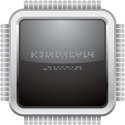 CPU If the motherboard is the circulatory system, the CPU is the central nervous system, where the 'brain' of the computer resides. It is the component responsible for the gargantuan task of running any and all programs or applications installed on your computer. In fact, without the Central Processing Unit, your computer is dead, as you cannot even boot to an Operating System.
CPU If the motherboard is the circulatory system, the CPU is the central nervous system, where the 'brain' of the computer resides. It is the component responsible for the gargantuan task of running any and all programs or applications installed on your computer. In fact, without the Central Processing Unit, your computer is dead, as you cannot even boot to an Operating System.
The CPU determines the speed of your computer and is the single most important gauge of your computer's performance, not withstanding other factors that may affect the rate by which it operates.
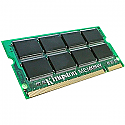 Memory (RAM) Random Access Memory (RAM) is that basic part of the computer that temporarily holds all the information you need while the system is in operation. It is so versatile it can access stored data in random order (hence, random access), rather than synchronized classification. It is the CPUs sparring partner when it comes to determining the speed of your computer. Not surprisingly, a computer with a large RAM (commonly 512 to 1024 megabytes or larger) and a middle-of-the-road CPU ca actually operate faster than a computer with powerful CPU but low RAM.
Memory (RAM) Random Access Memory (RAM) is that basic part of the computer that temporarily holds all the information you need while the system is in operation. It is so versatile it can access stored data in random order (hence, random access), rather than synchronized classification. It is the CPUs sparring partner when it comes to determining the speed of your computer. Not surprisingly, a computer with a large RAM (commonly 512 to 1024 megabytes or larger) and a middle-of-the-road CPU ca actually operate faster than a computer with powerful CPU but low RAM.
The most common type of RAM these days is the DDR-SDRAM or double-data-rate synchronous dynamic access memory, which simply put, means the DDR can access data twice as fast the rate of ordinary RAM. More recently, it has been superseded by the even faster DDR2, which is gaining quick popularity and reputation as the next standard for computer memory.
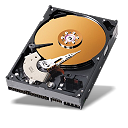 Hard Disk Drive (HDD) This is the component for long term storage in contrast to the temporary capacity of the RAM. Data contained in the RAM disappears with the loss of power when the computer is turned off. The hard disk drive retains all important system files like the OS, program files and files of personal work. In the event of low RAM the computer will turn to the hard disk drive as temporary virtual memory bank. The most commonly used hard disk drives have eighty gigabytes capacity, but can go as high as 400 GB. A computer can handle several hard drives installed in one system.
Hard Disk Drive (HDD) This is the component for long term storage in contrast to the temporary capacity of the RAM. Data contained in the RAM disappears with the loss of power when the computer is turned off. The hard disk drive retains all important system files like the OS, program files and files of personal work. In the event of low RAM the computer will turn to the hard disk drive as temporary virtual memory bank. The most commonly used hard disk drives have eighty gigabytes capacity, but can go as high as 400 GB. A computer can handle several hard drives installed in one system.
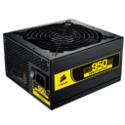 Power Supply Unit (PSU) Needless to say, your computer is ineffectual without power. Other than enabling the whole system to power up, it also regulates the power supply from AC outlets to tolerable voltage levels that are safe for internal computer components.
Power Supply Unit (PSU) Needless to say, your computer is ineffectual without power. Other than enabling the whole system to power up, it also regulates the power supply from AC outlets to tolerable voltage levels that are safe for internal computer components.
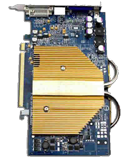 Video Card You need images displayed on your monitor for more efficient output. The video card provides the speedy rendering of onscreen images and present clearer and more detailed pictures. Graphics-intensive programs will highly benefit from high-end dedicated graphics and video cards.
Video Card You need images displayed on your monitor for more efficient output. The video card provides the speedy rendering of onscreen images and present clearer and more detailed pictures. Graphics-intensive programs will highly benefit from high-end dedicated graphics and video cards.
Peripherals To complete the ensemble of a computer system, you will need the monitor, keyboard and mouse. Other accessories such as printers and scanners may be useful for office work. Gamers may want to add speakers and joystick controls and optical drives may prove convenient to play CDs and DVDs. Of course, network card and router for Internet connection may also be added.
To get the best performance from your computer, all these components must fully integrate. The kind of mother board you have is the most vital determining component that will direct the specifications of all the other parts.

In a nutshell, a computer system has these elemental components to keep it going: the motherboard, the central processing unit (CPU), the memory, the hard disk drive, the power supply unit (PSU), the video card and the attached peripherals: the mouse, the keyboard, and the monitor. Now let's check the role each part plays to make the system function as it should.
 Motherboard Also sometimes called the 'mobo', the motherboard is considered to be the core of any computer system. It is the very 'heart' that pumps life to make the system work. Every little chip is comparable to the network of veins in the circulatory system of the human body. The motherboard provides the base for the rest of the computer components; it is where everything is attached, from the CPU to the littlest peripheral, providing support and passing information from one part to the other.
Motherboard Also sometimes called the 'mobo', the motherboard is considered to be the core of any computer system. It is the very 'heart' that pumps life to make the system work. Every little chip is comparable to the network of veins in the circulatory system of the human body. The motherboard provides the base for the rest of the computer components; it is where everything is attached, from the CPU to the littlest peripheral, providing support and passing information from one part to the other.  CPU If the motherboard is the circulatory system, the CPU is the central nervous system, where the 'brain' of the computer resides. It is the component responsible for the gargantuan task of running any and all programs or applications installed on your computer. In fact, without the Central Processing Unit, your computer is dead, as you cannot even boot to an Operating System.
CPU If the motherboard is the circulatory system, the CPU is the central nervous system, where the 'brain' of the computer resides. It is the component responsible for the gargantuan task of running any and all programs or applications installed on your computer. In fact, without the Central Processing Unit, your computer is dead, as you cannot even boot to an Operating System. The CPU determines the speed of your computer and is the single most important gauge of your computer's performance, not withstanding other factors that may affect the rate by which it operates.
 Memory (RAM) Random Access Memory (RAM) is that basic part of the computer that temporarily holds all the information you need while the system is in operation. It is so versatile it can access stored data in random order (hence, random access), rather than synchronized classification. It is the CPUs sparring partner when it comes to determining the speed of your computer. Not surprisingly, a computer with a large RAM (commonly 512 to 1024 megabytes or larger) and a middle-of-the-road CPU ca actually operate faster than a computer with powerful CPU but low RAM.
Memory (RAM) Random Access Memory (RAM) is that basic part of the computer that temporarily holds all the information you need while the system is in operation. It is so versatile it can access stored data in random order (hence, random access), rather than synchronized classification. It is the CPUs sparring partner when it comes to determining the speed of your computer. Not surprisingly, a computer with a large RAM (commonly 512 to 1024 megabytes or larger) and a middle-of-the-road CPU ca actually operate faster than a computer with powerful CPU but low RAM. The most common type of RAM these days is the DDR-SDRAM or double-data-rate synchronous dynamic access memory, which simply put, means the DDR can access data twice as fast the rate of ordinary RAM. More recently, it has been superseded by the even faster DDR2, which is gaining quick popularity and reputation as the next standard for computer memory.
 Hard Disk Drive (HDD) This is the component for long term storage in contrast to the temporary capacity of the RAM. Data contained in the RAM disappears with the loss of power when the computer is turned off. The hard disk drive retains all important system files like the OS, program files and files of personal work. In the event of low RAM the computer will turn to the hard disk drive as temporary virtual memory bank. The most commonly used hard disk drives have eighty gigabytes capacity, but can go as high as 400 GB. A computer can handle several hard drives installed in one system.
Hard Disk Drive (HDD) This is the component for long term storage in contrast to the temporary capacity of the RAM. Data contained in the RAM disappears with the loss of power when the computer is turned off. The hard disk drive retains all important system files like the OS, program files and files of personal work. In the event of low RAM the computer will turn to the hard disk drive as temporary virtual memory bank. The most commonly used hard disk drives have eighty gigabytes capacity, but can go as high as 400 GB. A computer can handle several hard drives installed in one system.  Power Supply Unit (PSU) Needless to say, your computer is ineffectual without power. Other than enabling the whole system to power up, it also regulates the power supply from AC outlets to tolerable voltage levels that are safe for internal computer components.
Power Supply Unit (PSU) Needless to say, your computer is ineffectual without power. Other than enabling the whole system to power up, it also regulates the power supply from AC outlets to tolerable voltage levels that are safe for internal computer components.  Video Card You need images displayed on your monitor for more efficient output. The video card provides the speedy rendering of onscreen images and present clearer and more detailed pictures. Graphics-intensive programs will highly benefit from high-end dedicated graphics and video cards.
Video Card You need images displayed on your monitor for more efficient output. The video card provides the speedy rendering of onscreen images and present clearer and more detailed pictures. Graphics-intensive programs will highly benefit from high-end dedicated graphics and video cards. Peripherals To complete the ensemble of a computer system, you will need the monitor, keyboard and mouse. Other accessories such as printers and scanners may be useful for office work. Gamers may want to add speakers and joystick controls and optical drives may prove convenient to play CDs and DVDs. Of course, network card and router for Internet connection may also be added.
To get the best performance from your computer, all these components must fully integrate. The kind of mother board you have is the most vital determining component that will direct the specifications of all the other parts.








